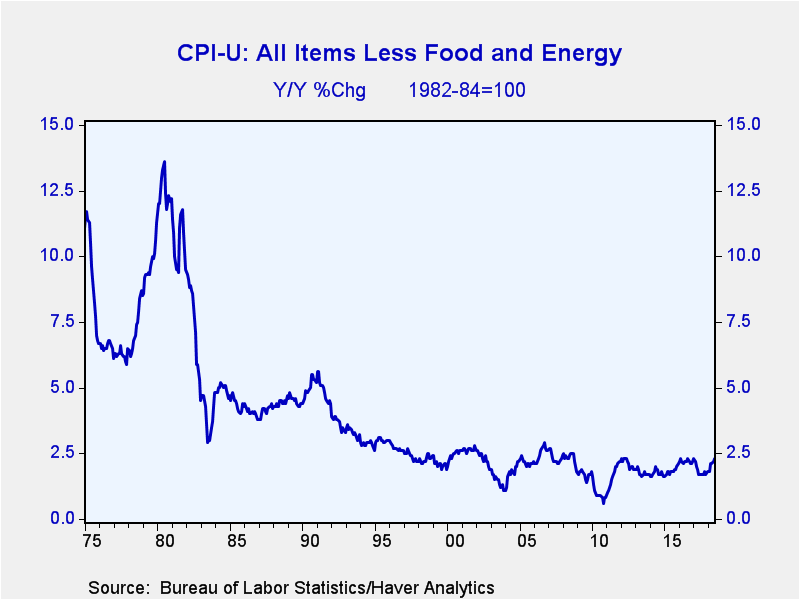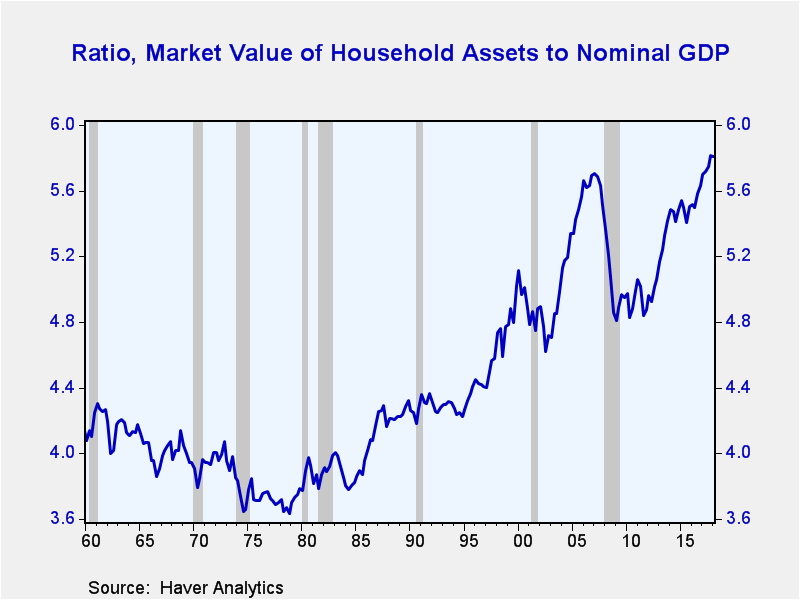 Global| Aug 06 2018
Global| Aug 06 2018Why Has Core Consumer Inflation Stayed Flat?
|in:Viewpoints
Summary
One of the great economic mysteries of the past 20 years has been the lack of cyclical pressure in core consumer price inflation. The answers to this mystery are far from being merely academic since the stance of monetary policy is [...]
 One of the great economic mysteries of the past 20 years has been the lack of cyclical pressure in core consumer price inflation. The answers to this mystery are far from being merely academic since the stance of monetary policy is now directly linked to readings on core inflation. As such, accurate measurement of the movement in core inflation is of critical importance for the central bank whose mandate is to maintain economic and financial stability.
One of the great economic mysteries of the past 20 years has been the lack of cyclical pressure in core consumer price inflation. The answers to this mystery are far from being merely academic since the stance of monetary policy is now directly linked to readings on core inflation. As such, accurate measurement of the movement in core inflation is of critical importance for the central bank whose mandate is to maintain economic and financial stability.
Since the mid-1990s the core inflation scorecard has been remarkable. Not only has core inflation(consumer prices excluding food and energy) been low and relatively flat, but it also has not shown any meaningful late cycle acceleration as has been the typical outcome when labor and product markets tighten over the course of a business expansion.
To be sure, at the end of the 1990s and 2000s business cycles core inflation readings were in the mid-to-high 2% range. And the current cycle is showing a similar pattern; the current economic expansion is its 10th year, one of the longest on record, and core inflation still stands at a modest 2.3%.
Globalization is argued to have significantly contributed to lessened cyclical inflationary pressures as the availability of new sources of products and materials and at lower price points versus US-produced goods has helped dampen consumer price inflation. In addition, the Internet has armed the consumer with much more information about product prices enabling them to price-comparison shop much easier than before.
Plainly, there is hard evidence to support both claims. For example, prices for core consumer goods, such as new and used cars, household appliances, and clothing, has been essentially unchanged for more than 20 years, and that lack of any price increases has contributed to the overall flat trend in core consumer prices.
Yet, there must be more to the story since core consumer products (i.e., goods) account for only 25% of the consumer basket. Is there something unusual occurring in the other 75%of the consumer basket? There is.
 Starting in 1998 the Bureau of Labor Statistics (BLS) changed its data sample for owner-occupied rent, a component that comprises one-third of the consumer basket, bigger than the basket of consumer goods. Because of an inadequate sample of owner –occupied houses available for rent BLS decided to link owner-occupied housing to the price data from the rental market, even though the two markets are fundamentally separate.
Starting in 1998 the Bureau of Labor Statistics (BLS) changed its data sample for owner-occupied rent, a component that comprises one-third of the consumer basket, bigger than the basket of consumer goods. Because of an inadequate sample of owner –occupied houses available for rent BLS decided to link owner-occupied housing to the price data from the rental market, even though the two markets are fundamentally separate.
Before the change there was a very tight relationship between owners rent and the movement in home prices as reported by the Federal Housing Finance Agency. After the switch in the data sample, however, there was a significant break between the two series with house prices showing large cyclical gains, especially during the latter stages of the business cycle, while the price trend in the owners rent index was relatively flat and noticeably smaller increases.
Without knowing the exact methodology used by the BLS it is hard to quantify the impact from the shift in the data sample for owner housing. Yet, the combination of owners housing relatively large weight in the consumer basket and the sizeable gap between changes in house prices and owners rent makes it clear that the shift in the data sample has been statistically significant. Moreover, since rents tend to have a countercyclical pattern the change in data sample also helped to check the late cyclical rise in core consumer prices that has been most typical of post war expansions.
Measurement biases of a few tenths of percent in the annual inflation rate are not that important when inflation is high, but biases do matter when reported inflation is low, especially when there is a deliberate effort on the part of policymakers to hit a specific target.
From a policy perspective, statistical changes in the core inflation rate that have resulted from fundamental changes in the consumer product markets should be reflected in official policy rates and market interest rates. Yet, technical adjustments, especially one that involves the interest-rate sensitive owner housing which also carries the largest weight in the consumer basket, should not trigger a policy change, as it would result in policymakers thinking they are falling short of their inflation target when in reality actual core inflation is on or above target.
 One check on whether this theory has any merit or not is to examine the economy and financial markets performances of the past 20 years. Since 1998, the US experienced three episodes (the late 1990s, the 2000s and the current cycle) in which the market value of assets soared in relation to nominal GDP. Is that a mere coincidence or is there a cause and effect from monetary policy following an illusive target of core inflation? Verdicts on the first two asset price cycles have been reached and while the verdict is still out on the third one it is the largest of the bunch.
One check on whether this theory has any merit or not is to examine the economy and financial markets performances of the past 20 years. Since 1998, the US experienced three episodes (the late 1990s, the 2000s and the current cycle) in which the market value of assets soared in relation to nominal GDP. Is that a mere coincidence or is there a cause and effect from monetary policy following an illusive target of core inflation? Verdicts on the first two asset price cycles have been reached and while the verdict is still out on the third one it is the largest of the bunch.
Joseph G. Carson
AuthorMore in Author Profile »Joseph G. Carson, Former Director of Global Economic Research, Alliance Bernstein. Joseph G. Carson joined Alliance Bernstein in 2001. He oversaw the Economic Analysis team for Alliance Bernstein Fixed Income and has primary responsibility for the economic and interest-rate analysis of the US. Previously, Carson was chief economist of the Americas for UBS Warburg, where he was primarily responsible for forecasting the US economy and interest rates. From 1996 to 1999, he was chief US economist at Deutsche Bank. While there, Carson was named to the Institutional Investor All-Star Team for Fixed Income and ranked as one of Best Analysts and Economists by The Global Investor Fixed Income Survey. He began his professional career in 1977 as a staff economist for the chief economist’s office in the US Department of Commerce, where he was designated the department’s representative at the Council on Wage and Price Stability during President Carter’s voluntary wage and price guidelines program. In 1979, Carson joined General Motors as an analyst. He held a variety of roles at GM, including chief forecaster for North America and chief analyst in charge of production recommendations for the Truck Group. From 1981 to 1986, Carson served as vice president and senior economist for the Capital Markets Economics Group at Merrill Lynch. In 1986, he joined Chemical Bank; he later became its chief economist. From 1992 to 1996, Carson served as chief economist at Dean Witter, where he sat on the investment-policy and stock-selection committees. He received his BA and MA from Youngstown State University and did his PhD coursework at George Washington University. Honorary Doctorate Degree, Business Administration Youngstown State University 2016. Location: New York.


